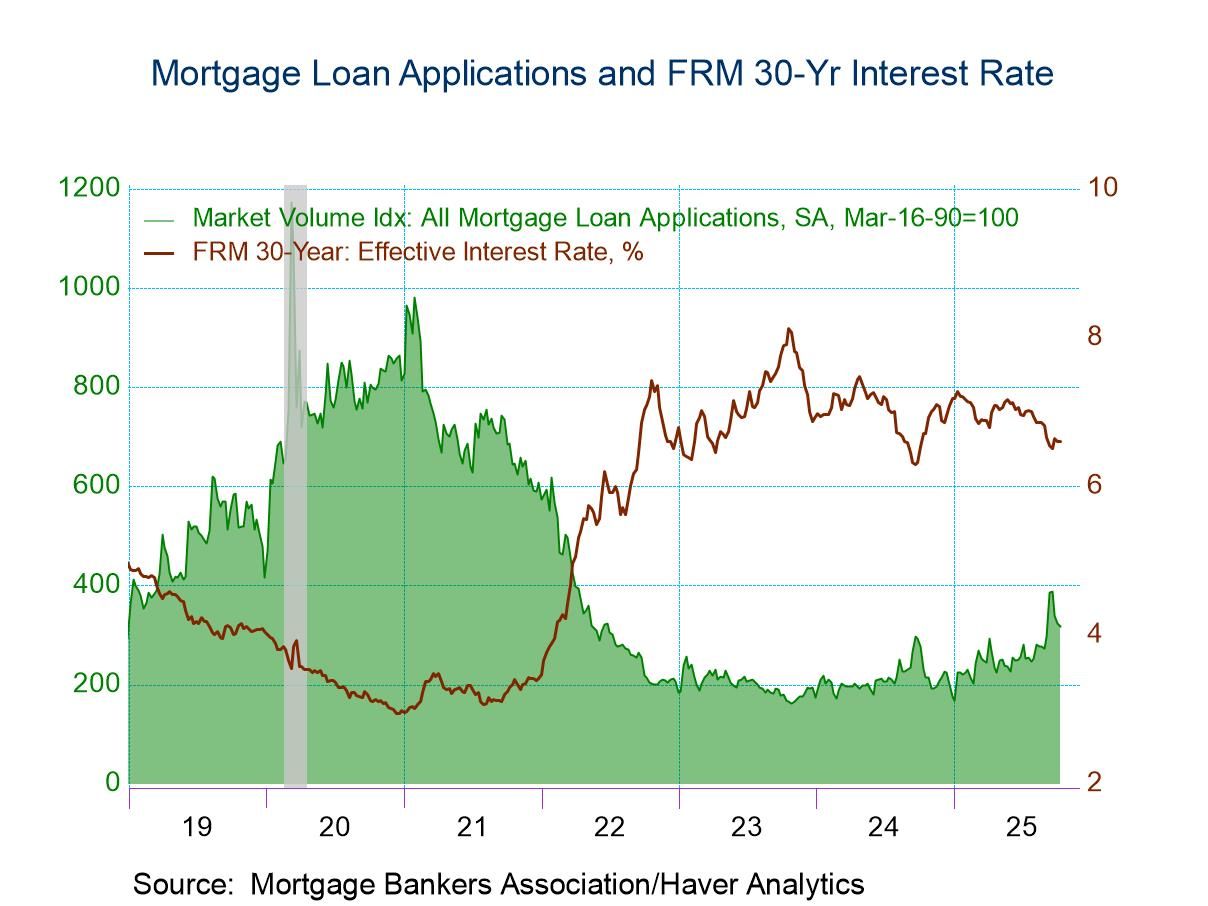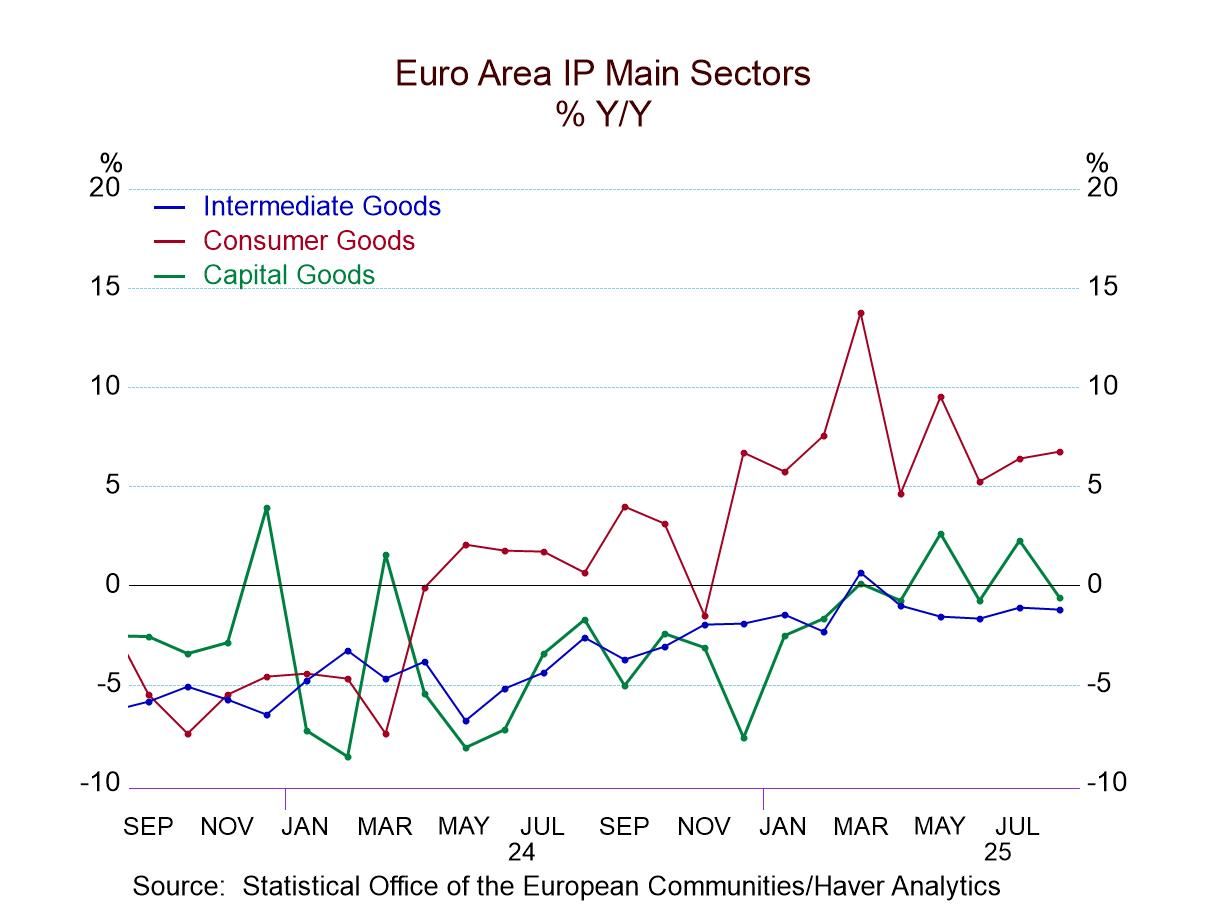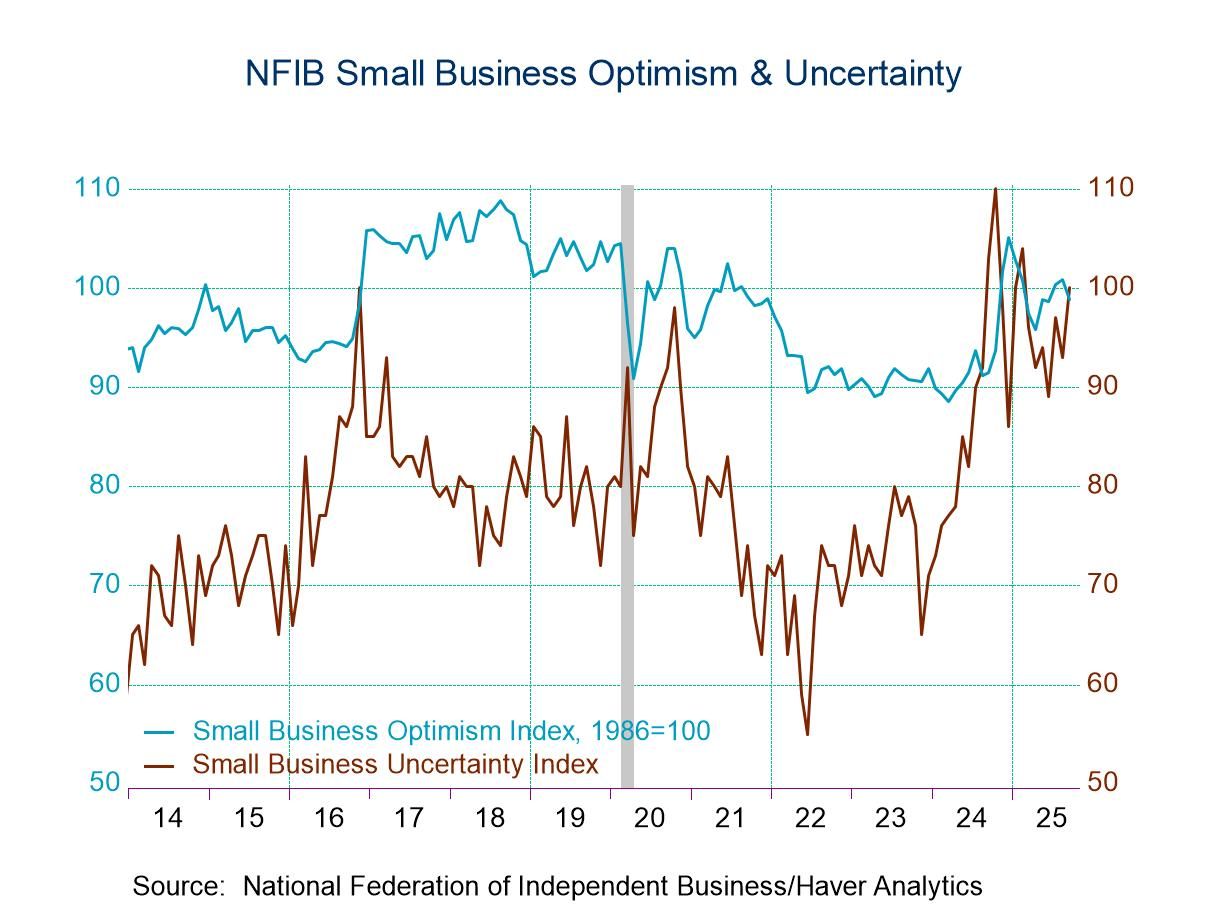 Global| Nov 02 2009
Global| Nov 02 2009ISM Factory Index Rises Further Continuing Respectable Rebound
by:Tom Moeller
|in:Economy in Brief
Summary
The recession in U.S. factory sector activity is over, according to the data from the National Association of Purchasing Management. Their composite index for October rose to 55.7 which was its highest level since April 2006. (Any [...]

The recession in U.S. factory sector activity is over, according to the data from the National Association of Purchasing Management. Their composite index for October rose to 55.7 which was its highest level since April 2006. (Any reading above the break-even point of 50 suggests rising activity.) The latest figure exceeded Consensus expectations for a little-changed reading of 53.0 and was up from the low of 32.9 reached last December. The ISM data is available in Haver's USECON database.
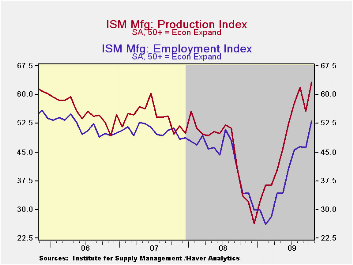 While just above the break-even level of 50, the
factory-sector growth suggested by the ISM index is in line with
recoveries accompanying past upturns after severe recessions. To mirror
the strength of those recoveries, however, the index still needs to
rise to a level near or above the level of 60.
While just above the break-even level of 50, the
factory-sector growth suggested by the ISM index is in line with
recoveries accompanying past upturns after severe recessions. To mirror
the strength of those recoveries, however, the index still needs to
rise to a level near or above the level of 60.
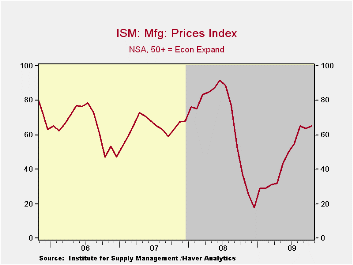 A sharp increase in the production component to a 63.3 led the
latest increase. During the last ten years there has been an 84%
correlation between the level of the production component of the
composite index and the three-month growth in factory sector industrial
production. It is appropriate to correlate the ISM index level
with factory sector output growth because the ISM
index is a diffusion index. It measures growth by using all of the
positive changes in activity added to one half of the zero change in
activity measures. Also rising was the inventories index to
46.9 which was its highest level since June of last year. Compared to
the low of 32.2 reached earlier this year, the latest figure suggests
that the correction of factory-sector inventory levels is about over.
A sharp increase in the production component to a 63.3 led the
latest increase. During the last ten years there has been an 84%
correlation between the level of the production component of the
composite index and the three-month growth in factory sector industrial
production. It is appropriate to correlate the ISM index level
with factory sector output growth because the ISM
index is a diffusion index. It measures growth by using all of the
positive changes in activity added to one half of the zero change in
activity measures. Also rising was the inventories index to
46.9 which was its highest level since June of last year. Compared to
the low of 32.2 reached earlier this year, the latest figure suggests
that the correction of factory-sector inventory levels is about over.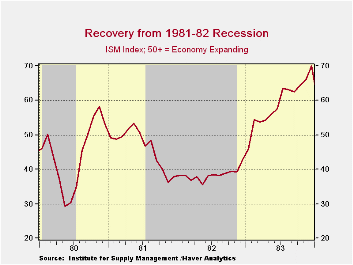
Also to the upside, the employment index improved to 53.1 and indicated growth in factory-sector payrolls for the first month since July of last year. During the last ten years there has been a 90% correlation between the index level and the three-month change in manufacturing payrolls.
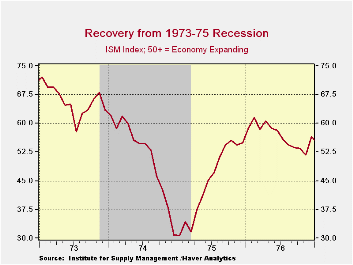 The new orders index slipped m/m to a still-strong reading of
58.5, though it was shy of its recent high. Also to the downside was
the speed of supplier deliveries index which slipped and erased the
gains of the prior two months. Suggesting moderation in the economic
downturns abroad, the export order index rose to 55.5 which was the
highest level since August of last year. During the last ten years
there has been a 53% correlation between the index and the q/q change
in real exports of goods in the GDP accounts.
The new orders index slipped m/m to a still-strong reading of
58.5, though it was shy of its recent high. Also to the downside was
the speed of supplier deliveries index which slipped and erased the
gains of the prior two months. Suggesting moderation in the economic
downturns abroad, the export order index rose to 55.5 which was the
highest level since August of last year. During the last ten years
there has been a 53% correlation between the index and the q/q change
in real exports of goods in the GDP accounts.
The separate index of prices paid continued to indicate improved factory sector activity with a rise to 65.0. That recovered the September decline and was up from the December low of 18.0. During the last twenty years there has been a 79% correlation between the price index and the three-month change in the PPI for intermediate goods.
The Yield Curve, October 2009 from the Federal Reserve Bank of Cleveland can be found here.
| ISM Mfg | October | September | August | October '08 | 2008 | 2007 | 2006 |
|---|---|---|---|---|---|---|---|
| Composite Index | 55.7 | 52.6 | 52.9 | 38.7 | 45.5 | 51.1 | 53.1 |
| New Orders Index | 58.5 | 60.8 | 64.9 | 32.4 | 42.1 | 54.3 | 55.4 |
| Employment Index | 53.1 | 46.2 | 46.4 | 34.2 | 43.2 | 50.5 | 51.7 |
| Prices Paid Index (NSA) | 65.0 | 63.5 | 65.0 | 37.0 | 66.5 | 64.6 | 65.0 |
Tom Moeller
AuthorMore in Author Profile »Prior to joining Haver Analytics in 2000, Mr. Moeller worked as the Economist at Chancellor Capital Management from 1985 to 1999. There, he developed comprehensive economic forecasts and interpreted economic data for equity and fixed income portfolio managers. Also at Chancellor, Mr. Moeller worked as an equity analyst and was responsible for researching and rating companies in the economically sensitive automobile and housing industries for investment in Chancellor’s equity portfolio. Prior to joining Chancellor, Mr. Moeller was an Economist at Citibank from 1979 to 1984. He also analyzed pricing behavior in the metals industry for the Council on Wage and Price Stability in Washington, D.C. In 1999, Mr. Moeller received the award for most accurate forecast from the Forecasters' Club of New York. From 1990 to 1992 he was President of the New York Association for Business Economists. Mr. Moeller earned an M.B.A. in Finance from Fordham University, where he graduated in 1987. He holds a Bachelor of Arts in Economics from George Washington University.




